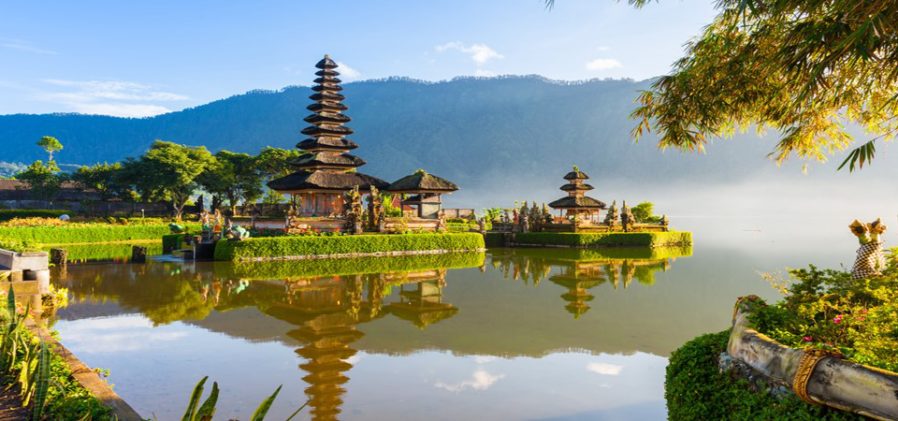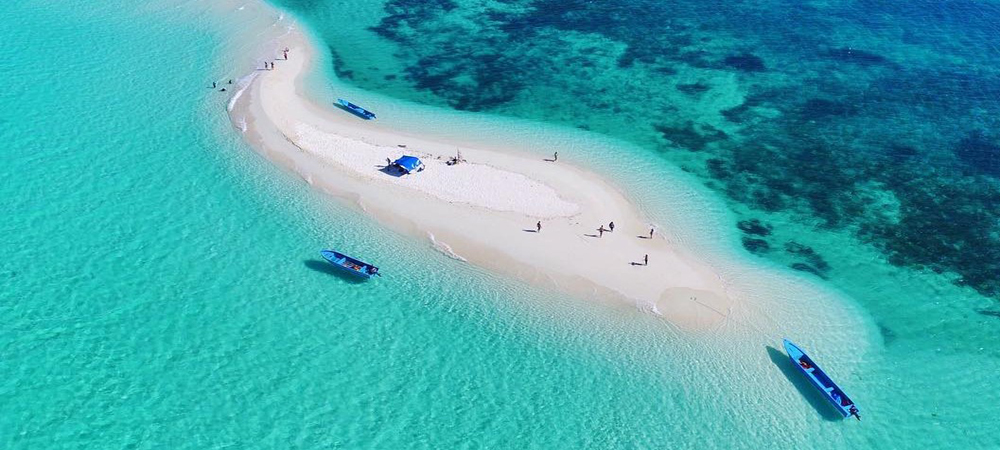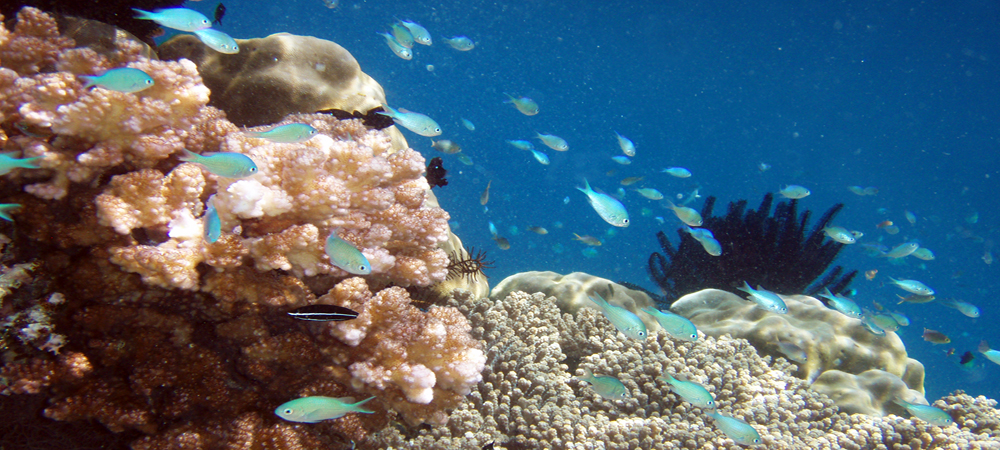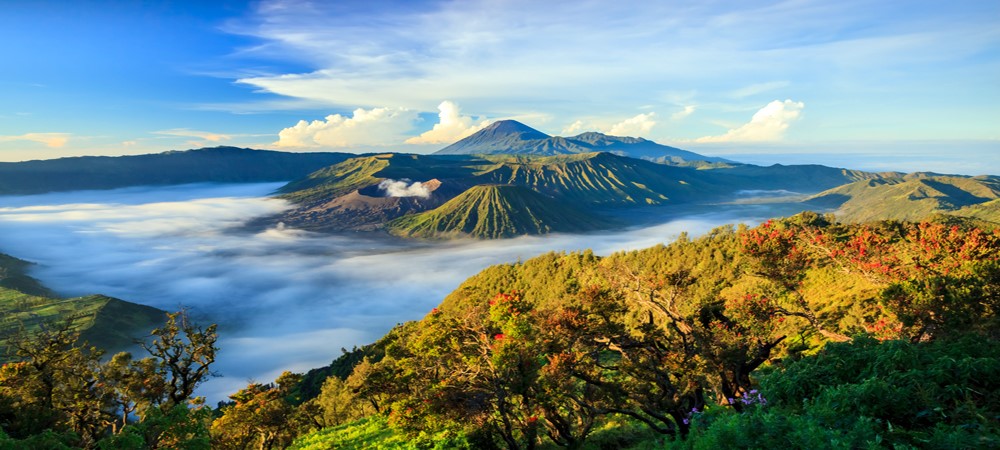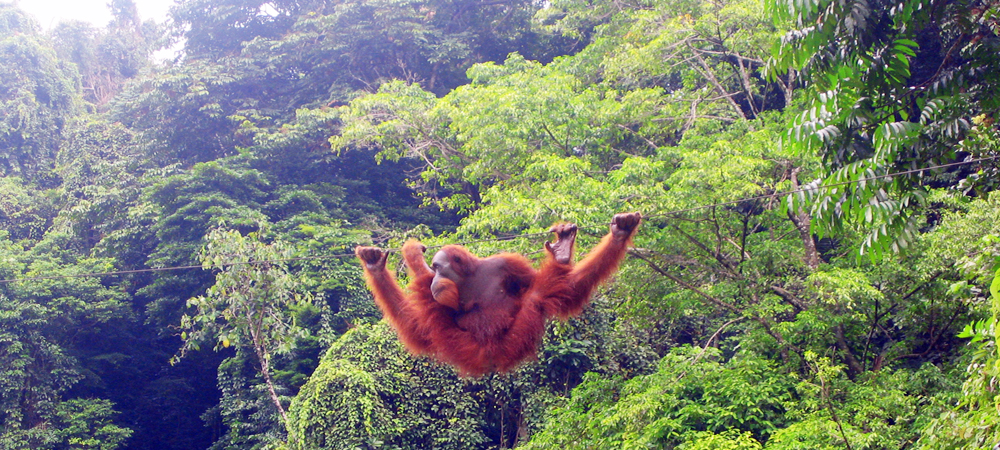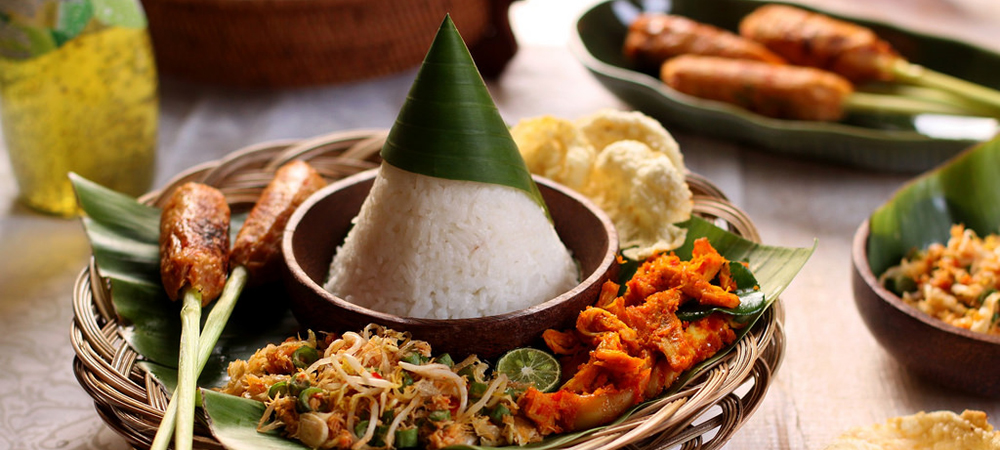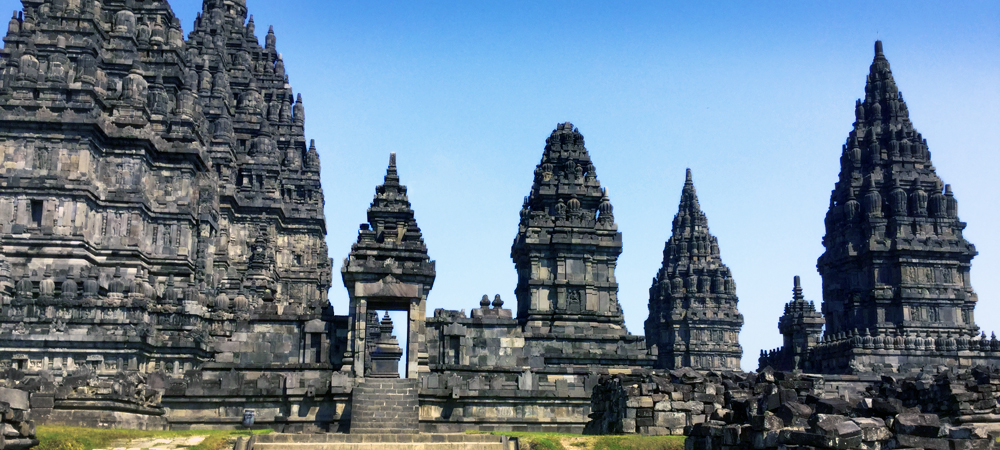Most travellers to South East Asia stick with some of the old standbys – Thailand, Vietnam and maybe Laos or Myanmar now that they’re opening up more to foreigners, leaving out some of the most unique countries in the region, such as Indonesia. However, this really is their loss…
Visitors to Indonesia tend to play it safe and head to some of the more well-known islands of Java, Sumatra or Bali, which is a mainstay of holidaymakers and those looking to experience South East Asian hospitality without venturing too far off the tourist track.
But in reality, Indonesia offers a plethora of opportunity for both the seasoned and unseasoned traveller: With more tourist-centred islands featuring luxury resorts, well-known restaurants and package tours to choose from , alongside some far flung islands where the only source of accommodation are home stays, the verdict is that Indonesia has something literally for everyone over it’s staggering 18,000 islands.
Beaches
The beaches in Indonesia number in their thousands and there are multitudes on just about every island from Java and Sumatra in the west to the Kei Islands, Banda Islands and the Gilis in the east. Undoubtedly the beaches of Bali are the most accessible, and while you may find them a bit overwhelmed in parts by beach bars, party-seekers and sun worshippers, they are a good introduction to the types of beaches on offer throughout Indonesia. Bali is also home to some magnificent surfing spots, suitable for all levels, while its neighbouring island to the East, Lombok, also has some pristine surf spots on its southern shores more suited to the experienced.
Of course the beaches on Bali are somewhat more developed than the pristine white sands of the Kei or Banda Islands in the East of Indonesia; two strings of islands that are so far removed from the rest of Indonesia that they are like stepping into other worlds entirely. In short, if you want to be perhaps one of the only foreigners in sight, places such as the Banda Islands and Kei Islands are your go to spot. The Kei Islands in particular are known to have some of the finest sand in the world: Snow-white and as soft between the toes as talcum powder: And there is virtually zero tourist development here (yet).
The beaches of the Gili Islands are an excellent “middle-ground” between Bali, with its roaring nightlife, and those beautiful (but also hard to get to) paradises such as the Kei and Banda Islands in the East of the country. The nightlife on the Gilis is generally quite laid back: Think reggae and acoustic bands on rustic beach bars rather than pumping house music in clubs. Yet in the daytime, the beaches are quiet enough for you to enjoy some snorkelling off the beach, or day trips out by boat to swim with the island chain’s large sea turtle population.
Snorkeling and Scuba Diving
The snorkelling and diving throughout the Indonesian islands is in a word – breathtaking. It truly has the best diving in South-east Asia, and arguably the best diving for the best prices in the world.
Akin to swimming through a saltwater aquarium complete with schools of various brightly coloured fish and coral of all shapes, sizes and colours makes Indonesia a diver and snorkellers paradise. Island chains such as Raja Ampat and the Banda Islands feature some of best coral gardens and diverse sea life you can find on the planet, and in many places you only have to wade only metres off the beach, making it an attraction you will find yourself returning to time and time again during your stay in the island chain.
Raja Ampat is a Marine Reserve National Park and is well-known for being the location in which seventy-five percent of the worlds species of fish can be found. It’s also well-equipped to receive higher end tourists who are looking for luxury in their pristine and welcoming resorts, but thankfully it is slowly beginning to cater more to the budget-minded as well. The Banda Islands offer almost exclusively budget/backpacker friendly lodgings in home stays, almost all being able to plan for you to be taken out by boat to explore the very best drift snorkelling sites across the island chain for very reasonable prices. It also used to be the world centre of spice growing and trading, and today every island has wild nutmeg trees growing everywhere, unspoilt Dutch and British forts that are being slowly swallowed up by the jungle and the spice trees, a testament to its colonial past.
Another option is the dramatic star shaped island of Sulawesi in the north of Indonesia: Nestled near the centre of this star is a small island chain called the Togean Islands: These islands offer a mix of budget and luxury places to stay, and in particular the diving and snorkelling is fantastic on the island known as Una Una, mainly because it is a real volcano island with a massive reef system where seeing rays, turtles, sharks and all manner of tropical fish. The lobster here is also famous for being criminally cheap: Caught and sold by the islands population of sea gypsies.
Nature
The nature in Indonesia is as varied as its sea life. The country is awash with both active as well as dormant volcanoes which occasionally spread its nutrient-rich ash over the land, fertilizing the soil and creating ideal conditions for various plants to grow and thrive which in turn is perfect for some of the wildlife that call this huge island nation their home.
Natural wonders across Indonesia include its almost literally thousands of volcanoes, many of which are active and provide stunning backdrops to temples, towns and beaches. The island of Java is home to a number of well-known, active volcanoes such as Mount Bromo and Mount Merapi, two famous volcanoes that make up a series on the island and are favourite hiking destinations for those who are looking for a bit of an exciting challenge. Another volcano nearby, between the islands of Sumatra and Java is the remnants of the famed Krakatoa, which erupted massively in 1883 and resulted in significant issues with weather patterns around the world as a result of the ash it sent into the atmosphere. While the mother volcano may have blown itself apart, a new “Baby Krakatoa” stands in its place, gaining strength.
If you’re looking for something truly unique though, the islands of Raja Ampat and their Marine Reserve as already mentioned additionally hold some species of fish that are unique to the area, alongside numerous other species. So if seeing unique wildlife is high on your priority list, Indonesia is your place to be.
Other natural attractions around the country include the unusual colour changing pools on the island of Flores. While Flores island features amazing hiking opportunities and quieter beaches than the neighbouring Gili Islands, it’s also home to pools of water that are fed by mineral springs which cause colour changing water to appear daily due to the different nutrients that come out of the springs. A true unique piece of Indonesia, these changing pools are a great attraction, bringing people from around the world to witness the different colours almost daily.
Wildlife
From the rainforests on Sumatra to the intensely white sand of the Kei Islands, the nation of Indonesia is home to numerous species of both plants and animals.
While Indonesia may be famous for its beaches and volcanoes, there are a number of other sights to behold throughout – whether it’s birds, fish or even the infamous Komodo Dragons. These large Monitor Lizard-like creatures make the Marine National Park of Komodo Island their home, and no where else in the world can you find them. Komodo Dragons attract visitors from around the world to get a glimpse of them as they wander the beaches or laze in the shade of Komodo Island. These beasts can grow up to 6 metres in length and have teeth coated in poison, which they use to hunt buffalo and then wait for the toxins to make the buffalo too disorientated to defend itself.
But with a fiercesome reputation, this is an animal that is slowly making its way onto the endangered species list, and as such they are beginning to attract a lot more attention from not just visitors, but also conservationists who hope to protect their habitats and the longevity of the Komodo.
Another more friendly animal famous in Indonesia is the Orangutan. They make their home in the rain forests of Sumatra, the most westerly island in the chain of Indonesia, and along with lush vegetation and numerous species of birds. This is a perfect place for hiking and exploring as well as viewing these magnificent animals. The island has an extremely close proximity to Malaysia as well, which makes it easily accessible for those who may be coming down from other South East Asian nations such as Thailand et al. Spotting these animals in their natural habitat couldn’t be any easier than here.
Tribes
It’s no surprise that in a nation with over eighteen thousand islands (with six thousand actually still uninhabited) that there would be a plethora of different types of tribes scattered throughout its remote regions. While some tribes don’t take kindly to visitors showing up to see how they live like they’re animals in a zoo, others are extremely welcoming and even work with local guides to help bring travellers in to get a peek at their lives. These treks can be incredibly educational, eye opening and fascinating as well as becoming one of the most remembered parts of your trip to Indonesia. Each island in Indonesia seems to have their own unique tribes that make the area their home up in the hills, sheltered by rainforests and with every island being unique, each tribe is as well. Some islands are home to several different tribes which have a storied history of warring with one another. And while tensions may remain between some, for the most part, the wars have passed, especially with the introduction of travellers visiting which can earn the tribes a bit of money through the sale of handicrafts and jewellery.
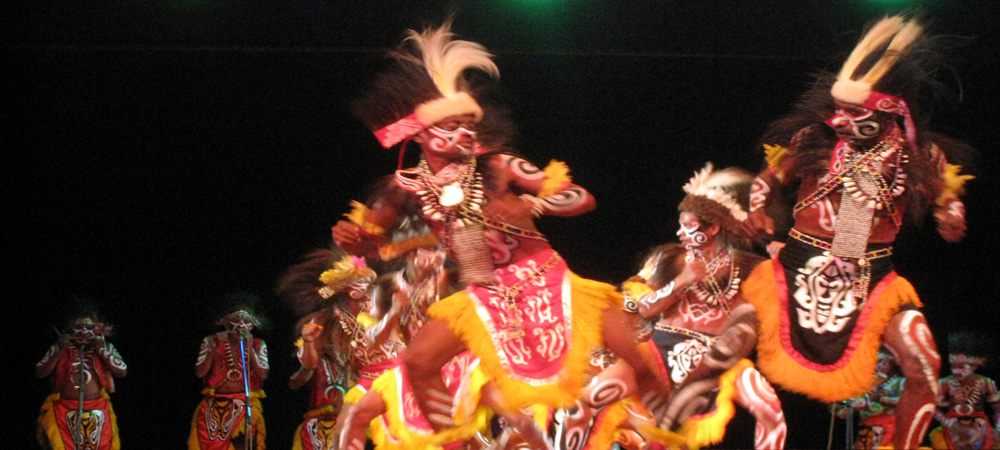
The islands that have the most visited tribes are the more tourist-centred islands of Bali, Sulawesi, Sumatra and Java, but trips to see tribes on other islands such as in the West Papua province can be arranged by local guides if you know where to look and who to ask. It’s worth researching this in advance so you know who to ask if you’re looking to check out tribes on a more remote island. Some travel agencies may be able to help if it’s a last minute thing you think of when you’re actually in the country.
It’s also worth mentioning that while day trips are common, some tribes are happy for visitors to bring their own tents and sleep overnight on their land, and often times this can be a positively riveting experience that will be remembered for years to come.
Food
Inevitably throughout Indonesia, the food is primarily seafood based coupled with rice, given that it’s an island nation and some of the islands are tiny stretches of land only a few miles across. Rice is used in a great swathe of dishes across the island and is considered one of, if not the primary staple food for Indonesians, and can be found at most meals from breakfast to dinner. When Indonesian food is mentioned, it’s a bit of a general term as each island and region in the country tends to have its own take on dishes. For example, Bali being a more Hindu influenced region shows its background in not just the styles of temples on offer, the religion widely practiced, but also in the food. It’s here that curry lovers will find their favourite Indian dishes, perhaps sprinkled with some Indonesian flair such as region specific chillies or herbs. It’s important to understand that as a Muslim majority nation, a lot of the dishes that are made with meat will be made with halal meat, which can pose an ethical conundrum for some travellers. If in doubt, stick with vegetarian or fish dishes if you aren’t sure of how the meat has been prepared.
Indonesia is home to a number of fantastic and delicious coffee varieties, especially those grown on Java and Sumatra amid the volcanoes that provide nutrient-rich soils for the coffee to thrive. If you’re in the area, make sure you take advantage of the world-famous “best, but most expensive” coffee known to man, the Kopi Luwak – or the coffee that is eaten and then expelled by the Civet Cat. Although expensive by Indonesian standards, this coffee is cheap compared to getting a cup in the rest of the world – a small pot will run you around $20 USD, but is well worth the splurge for a treat, even just to say you’ve tried it. Keep in mind it goes for hundreds of dollars a bag in the rest of the world (dependent on location), so it’s a real gem.
Overall, you can find a number of different dishes throughout Indonesia, including more western-influenced restaurants and dining options in the bigger cities and towns. Always be wary of water and ice, as not everywhere uses clean water for their ice so it’s best to go without. The water can cause you to fall ill, so always ensure – as with most other places – to keep to bottled water.
Alcohol is widely available throughout Indonesia, and the local brew Bintang (meaning ‘Star’ in Bahasa – the language of Indonesia) costs only a dollar or two for a bottle! It’s quite a palatable and refreshing rice beer. However, in the seriously devout Muslim region of Aceh, alcohol is almost expressly forbidden. But this really is the exception to the rule: In virtually the whole country, Indonesians of all religions definitely enjoy a drink, unless it’s of course it’s the holy month of Ramadan!
Holy Sites and Religious Identity
As already said, Indonesia is a Muslim majority nation which means there will be mosques of all styles and sizes across the country, especially in larger centres, particularly Aceh. Alongside these though are scattered hints at the past of Indonesia – Buddhist and Hindu temple complexes that span large swathes of land, built and decorated with pristine attention to detail and featuring Buddhas, and various deities of the Hindu pantheon. While you’ll also see a good number of cathedrals and churches from Indonesia’s Christian population, and while hill tribes tend to still practice their indigenous animist beliefs alongside Islam, Christianity or Hinduism, Indonesians are generally liberal in their approach to religion and how they worship, and don’t see any problem with mixing different religious traditions and belief systems together.
A number of the most popular and stunning religious complexes are located on Java, namely Borobodur – a Buddhist temple complex and Prambanan, a Hindu one. Both of these are located near the city of Yogyakarta, a municipality that is well worth a visit for those who are flying into Java, even if it’s just to introduce yourself to some food, the culture and a couple of great days out to the temples. Yogyakarta is likewise set on the south coast of the island and is well-placed for visitors to head to Mount Merapi for a good hike if they are so inclined. Aside from this, Borobodur and Prambanan are set against backdrops of the regions volcanoes such as Mount Merapi, making for excellent viewpoints for miles and stunning vistas.
For a taste of Asian Christianity, then Jakartha Cathedral is a must see if you find yourself in Indonesia’s capital city.
It’s equally important to take into consideration that while Indonesia is a mainly Muslim nation, it retains a certain level of multi-faith and multiculturalism and as such celebrates and recognises a variety of different statutory holidays. During the month of Ramadan, you may find certain things more difficult to do during the day (such as finding somewhere that serves food), but there will always be restaurants open for tourists somewhere, the choice may just be slightly limited.
That being said though, a lot of Indonesians are very laid back in regard to their religion and it’s very likely that in some parts (such as on smaller islands and Christian areas) you’d never know it was Ramadan at all. Travel and movement wise, during the month of Ramadan you may find that more ferry services are available to certain islands or that getting somewhere is easier, so it’s a good idea to look into this ahead of time to plan accordingly because on a different side of the same coin, you may find that some routes become extremely crowded, or that some bus or ferry routes are restrictive.
Historical Sites
The history of Indonesia is relatively more recent in terms of length when compared to some of the nearby neighbours such as Japan or China. With their early modern history starting only in the area of around 2500BC, there were a number of different kingdoms of prominence that rose and fell over the years. Two of these kingdoms – the Srivijaya and the Majapahit were two that existed between the 10th and 14th centuries that helped unite the islands of Borneo, Bali, Java, Sumatra and parts of Malaysia. Marco Polo arrived in the late 1200s and soon after the region began to be
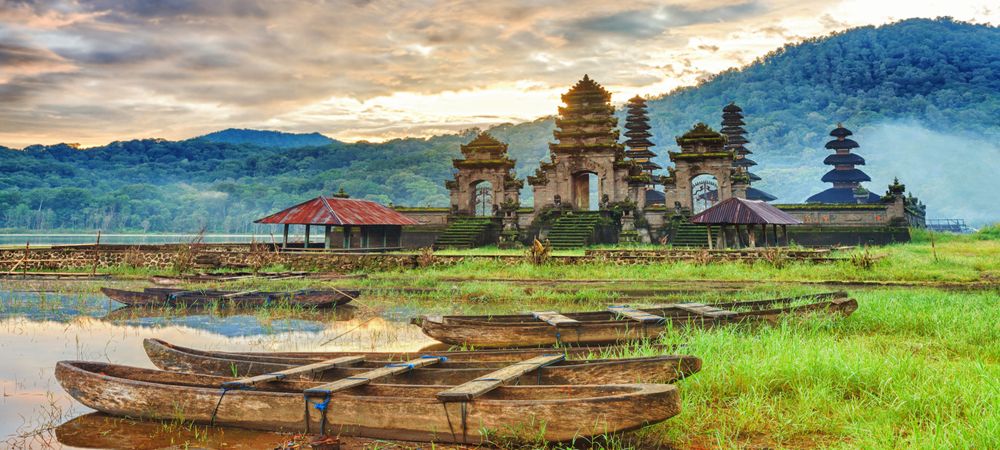
disputed over by the British and the Dutch due to some of the spices of the day – namely nutmeg and mace. These two spices were prized possessions and quite literally worth their weight in gold, making the region a hotbed of contention for warring European powers who were expanding their reigns around the world. With the Dutch taking control of much of the western side of the country, they eventually held it for over three hundred years. It wasn’t until the 1824 that the British and the Dutch finally agreed the Anglo-Dutch treaty which divided the region into their own specific spheres of influence, with the Dutch giving the island of Malacca to the British and the British ceding their colonies on the island of Sumatra to the Dutch.
Remnants from this colonial era can be found all over the ‘spice islands’ in Indonesia, from the Banda Islands, Ambon and Ternate located in the Maluku islands to Makassar located on Sulawesi Island. Expect to find Dutch, English and Portuguese forts and castles from these times. You’ll really get a sense just how much these far flung islands were fought over for their cloves and nutmeg.
Indonesia is a fascinating and amazing place to discover, and with relaxed visa regulations now allowing you to stay longer, you can explore much more of what this vast nation has to offer. Nevertheless, with so many islands to choose from, it will be difficult to pick just a few islands to check out! One thing is certain though – whether it’s the ancient temples on Java and Bali, or the surfing on Lombok, or the world-class diving and snorkelling, Indonesia is an addictive place you will return to time and again once you get your first taste.
Recommend tours of Indonesia & Bali:
- Bali Romance: 8 Night Luxury Bali Honeymoon Package featuring Jimbaran, Seminyak & Ubud
- Bali & Mt Bromo: 7-night Private Indonesia Tour of Bali, Yogyakarta and Mount Bromo
- Bali & Java Highlights: 7-night Private Indonesia Java Tour of Bali, Yogyakarta and Jakarta
For additional inspiring Indonesia vacatins, be sure to check out our Indonesia Tour Packages Page.

